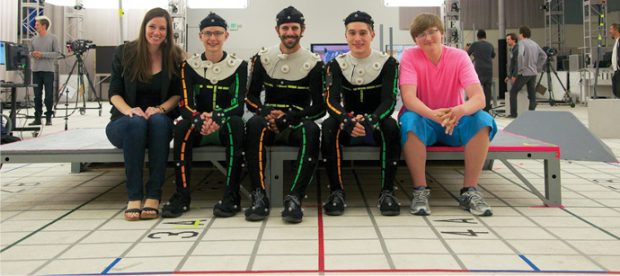
Future Engineers’ challenges are judged by STEM experts and incentivized by educational prizes that emphasize the excitement of STEM careers. Image courtesy of Future Engineers.
Latest News
July 1, 2017
Deanne Bell is the CEO and founder of Future Engineers, an online education platform that hosts innovation challenges for K-12 students. Bell’s story is motivating and helping to attract younger students to the merits and fascination of engineering and science, with particular emphasis on innovation.
We spoke to Bell to understand how the program came to be and what it offers:
Digital Engineering: Can you provide an overview of the program?
Deanne Bell: After hosting science television shows for many years, I saw the need for a platform that takes mainstream topics from media and/or the tech industry one step further—into the classroom as real-world design challenges. The result was Future Engineers.
After brainstorming initial first challenges, I contacted the ASME Foundation and NASA with a proposal. We collaborated to create the framework for Future Engineers’ inaugural 3D space challenge series, sponsored by the ASME Foundation with technical assistance from NASA, which has produced historic achievements.
 Future Engineers’ challenges are judged by STEM experts and incentivized by educational prizes that emphasize the excitement of STEM careers. Image courtesy of Future Engineers.
Future Engineers’ challenges are judged by STEM experts and incentivized by educational prizes that emphasize the excitement of STEM careers. Image courtesy of Future Engineers.Future Engineers has subsequently received a Small Business Innovation Research grant from the U.S. Department of Education and was named a Breakthrough Award winner by Popular Mechanics. All challenges at FutureEngineers.org are offered free for student/classroom participation and are aligned with STEAM (science, technology, engineering, arts, math) and Maker education.
DE: Who participates in the program?
Bell: Future Engineers challenges are open to all K-12 students in the U.S. Our most recent challenge received entries from students in 34 U.S. states. We have two age groups—juniors (ages 5-12) and teens (ages 13-19). For our most recent challenge, 78% of entries were created in a teacher-facilitated class or workshop.
DE: What becomes of the innovations that are presented? Have any of them been adopted or are there plans to adopt?
Bell: The first Future Engineers challenge launched the same day NASA sent the first 3D printer to the International Space Station. NASA and the ASME Foundation asked students to design a tool for astronauts to 3D print in space. The winning entry of this challenge became the first student-designed 3D print on the International Space Station. Created by R.J. Hillan of Enterprise, AL, the Multipurpose Precision Maintenance Tool (MPMT) was one of the first 3D prints manufactured in space and RJ was invited to Payload Operations Integration Center at Marshall Spaceflight Center in Huntsville, AL, to speak to astronauts on the International Space Station about his design.
The MPMT became not only part of NASA’s technology research to study the differences of 3D printing in space vs. Earth but it also served as an educational tool to explain the advantages of manufacturing in space to students and the public.
DE: Any examples of students who’ve gone off to college to study STEM and were participants in your program?
Bell: Yes! All of our winners have continued in their STEM pursuits.
For example, our first teen winner went on to study engineering and entrepreneurship in college. Our second teen winner is still in high school, but continues to innovate for space, most recently by researching 3D printed heat shields for a state science fair project.
Our first junior winner has been inspired to participate in engineering summer camps, write essays about engineering for national competitions and even code her own website dedicated to inspiring fellow girls in STEM. We are honored to have many of these stories to share.
DE: Can you provide some examples of what the students have designed?
Bell: For our 3D printing challenges students are required to submit a digital 3D model of their design, which means that most participants have to develop CAD design skills for the first time. For that reason, we intentionally leave our challenges open-ended so that students of all levels can successfully create a solution.
For example, when we asked students to design a container for astronauts to 3D print in space, we received everything from boxes to collect Mars rocks from young students to hydroponic plant growth chambers from the older students. We are blown away at the level of creativity and detail of the submissions.
Deanne Bell is the CEO and founder of Future Engineers, an online education platform that hosts innovation challenges for K-12 students. Bell’s story is motivating and helping to attract younger students to the merits and fascination of engineering and science, with particular emphasis on innovation.
Subscribe to our FREE magazine, FREE email newsletters or both!
Latest News
About the Author
Jim Romeo is a freelance writer based in Chesapeake, VA. Send e-mail about this article to [email protected].
Follow DE





